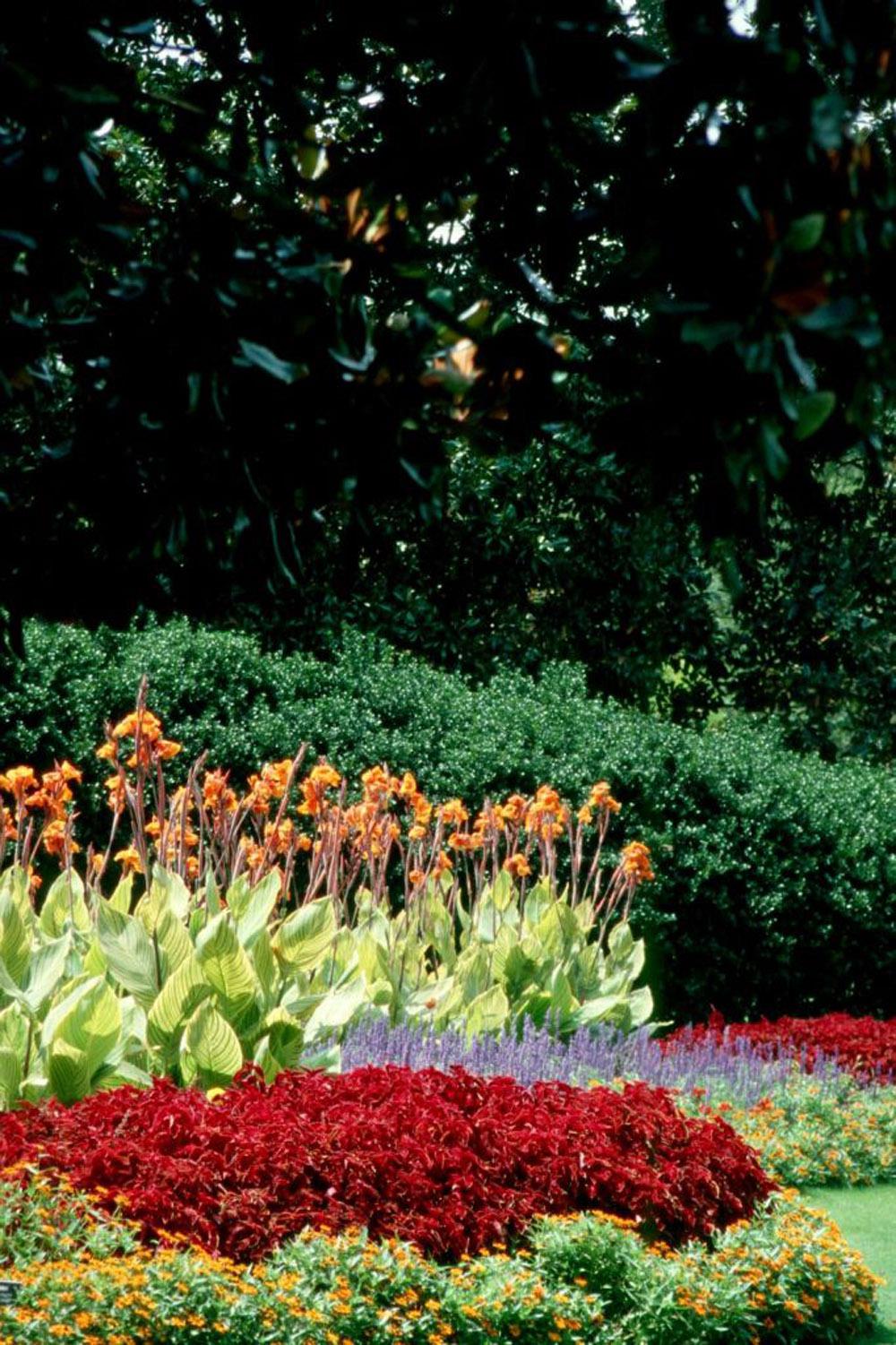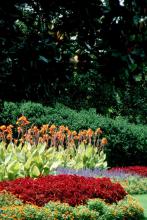Information Possibly Outdated
The information presented on this page was originally released on September 2, 2004. It may not be outdated, but please search our site for more current information. If you plan to quote or reference this information in a publication, please check with the Extension specialist or author before proceeding.
Tigers make great garden statement
By Norman Winter
MSU Horticulturist
Central Mississippi Research & Extension Center
This time of year, you should have a tiger making a terrific statement in your garden. The tiger I am referring to is one of the hottest cannas anywhere: the Bengal Tiger.
Bengal Tiger canna, also sold under the name Pretoria, is not new, but the interest in this variety probably surpasses what it saw at its debut.
Bengal Tiger produces lush, tropical, banana-like foliage with green and yellow variegation. That alone would warrant growing the plant. But it also produces exotic-looking orange flowers and reaches 4 to 5 feet in height.
The plants are tough, thriving for years in soils that range from soggy to dry and upland. The best blooming will occur in full sun, though partial shade is tolerated. While the plants can thrive in soggy conditions, they will be more cold-hardy in soils that are fertile yet well drained.
Amend tight, heavy soils with 3 to 4 inches of organic matter like peat or humus, and till to a depth of 6 to 8 inches. While tilling the soil, incorporate 3 pounds of a 5-10-5 fertilizer per 100 square feet of planting area.
We normally plant rhizomes in the spring, setting them 3 to 5 inches deep and 12 to 18 inches apart. Container-grown plants can be planted anytime, and these are planted at the same depth as they are growing in the container.
Feed established plantings in the spring with the emergence of growth and again in mid-summer with 2 pounds of something like a 12-6-6 per 100 square feet of bed space.
Use taller cannas like Bengal Tiger in the background and short cannas in the middle of the border. They are great around water features.
For the best landscape effect, mass-plant beds with Bengal Tiger in large drifts, and plant another variety of canna in an adjacent drift. They are also suited for the back of the perennial border or in large tubs.
Use the Bengal Tiger in tropical gardens with bananas and elephant ears. Combine them with sun coleus, Joseph's coats, and blue flowers like salvias or climbing thunbergias.
Canna leaf rollers are the most serious pest for this plant. They will cement the unfurling leaves together, then chew completely through them. Systemic insecticides can prevent them. Alternately, cut the stalk and destroy it when it becomes unsightly.
To keep a tidy appearance, remove spent flowers and seedpods. This will also encourage repeat flowering. In the fall after the first frost, cut stems back to the ground.
Divide clumps every three or four years to increase performance and prevent overcrowding. It is quite easy to multiply your stand for additional plantings.
The Bengal Tiger planting has become one of several great attractions at the Fall Flower and Garden Fest and the Truck Crops Branch Experiment Station in Crystal Springs, where it is growing with bananas and other topicals.
The Fall Flower and Garden Fest is the best free horticultural event in the Southeast and takes place Oct. 15 and 16 this year. Call (601) 892-3731 for more information.



